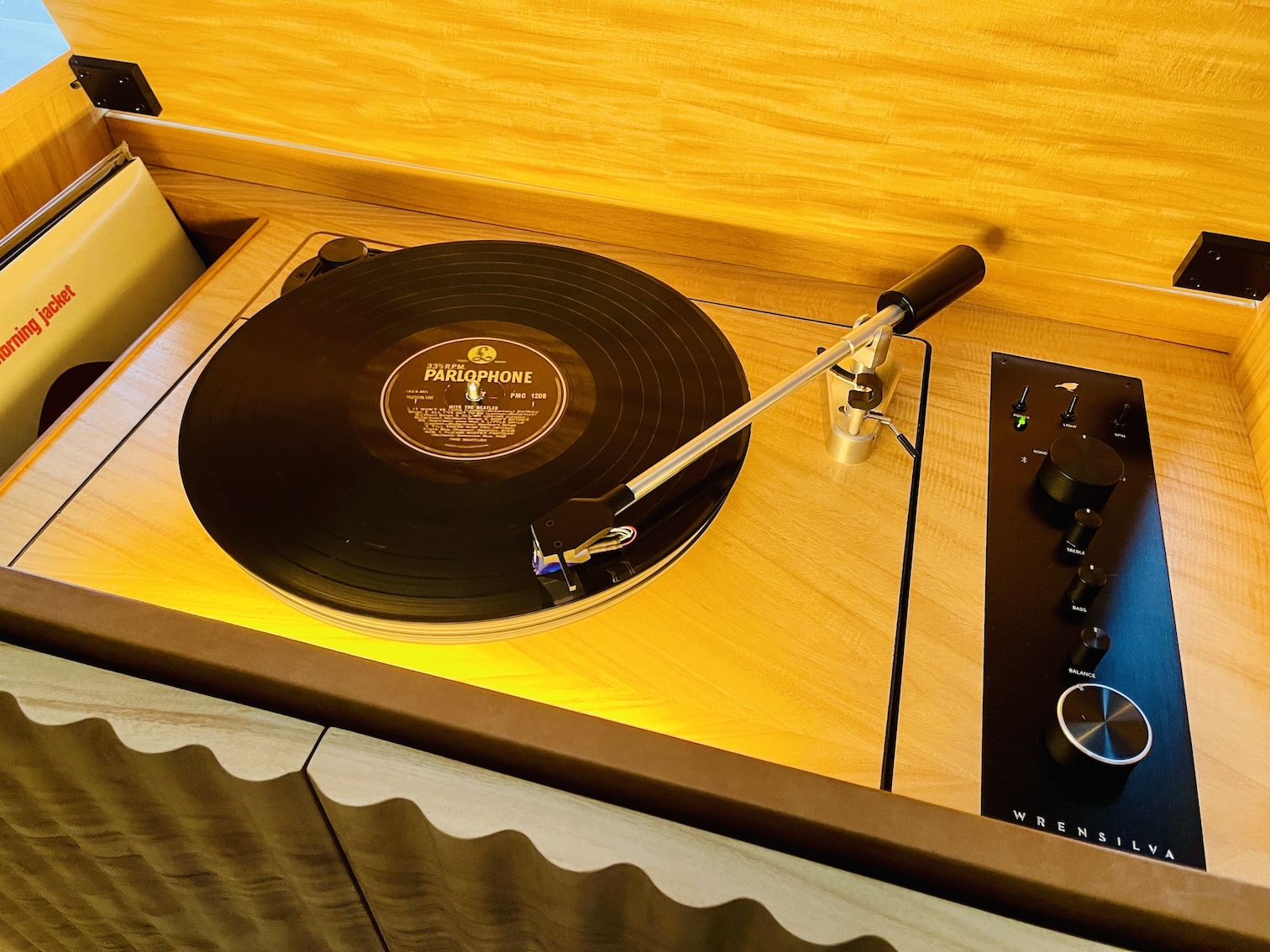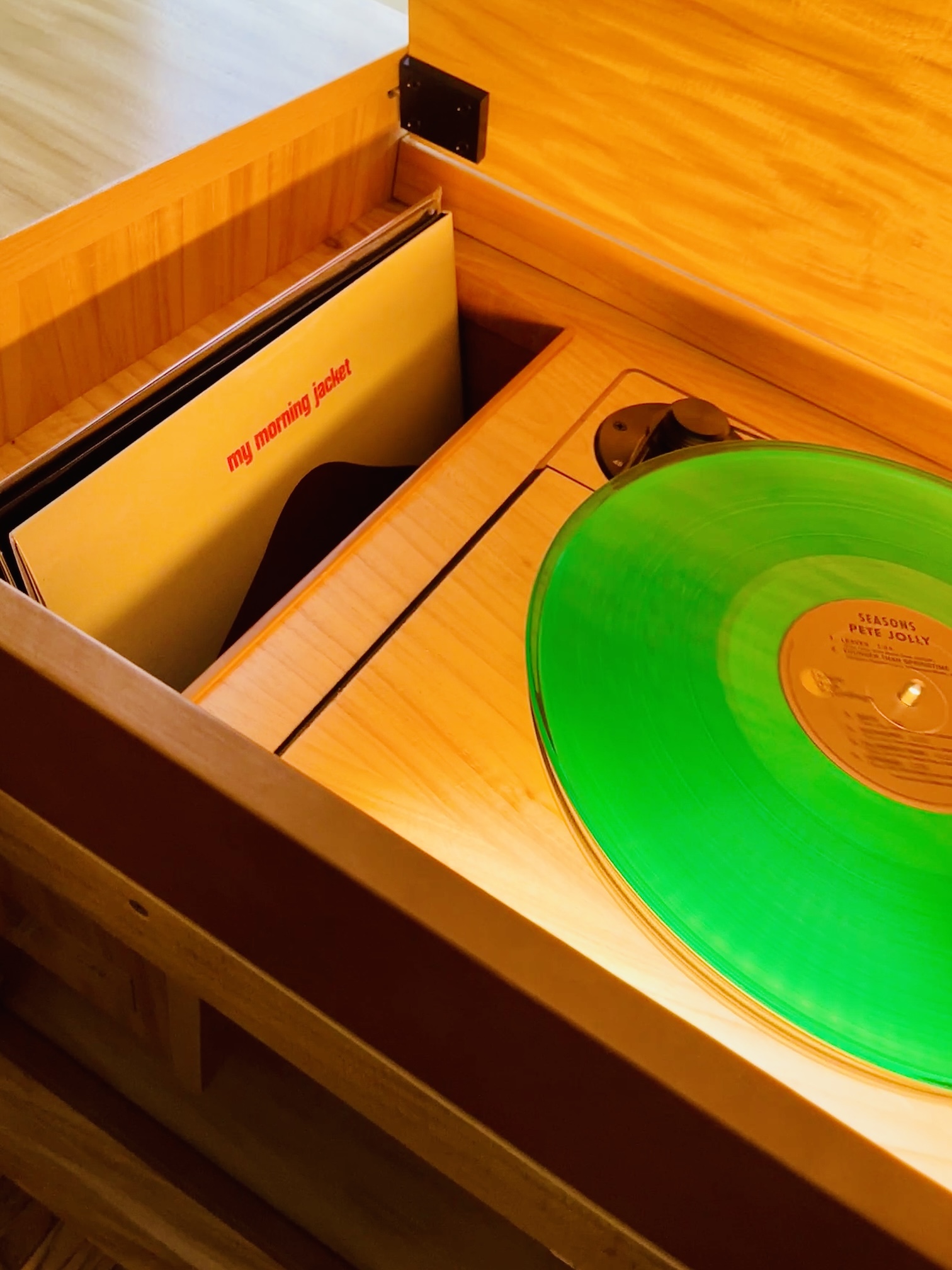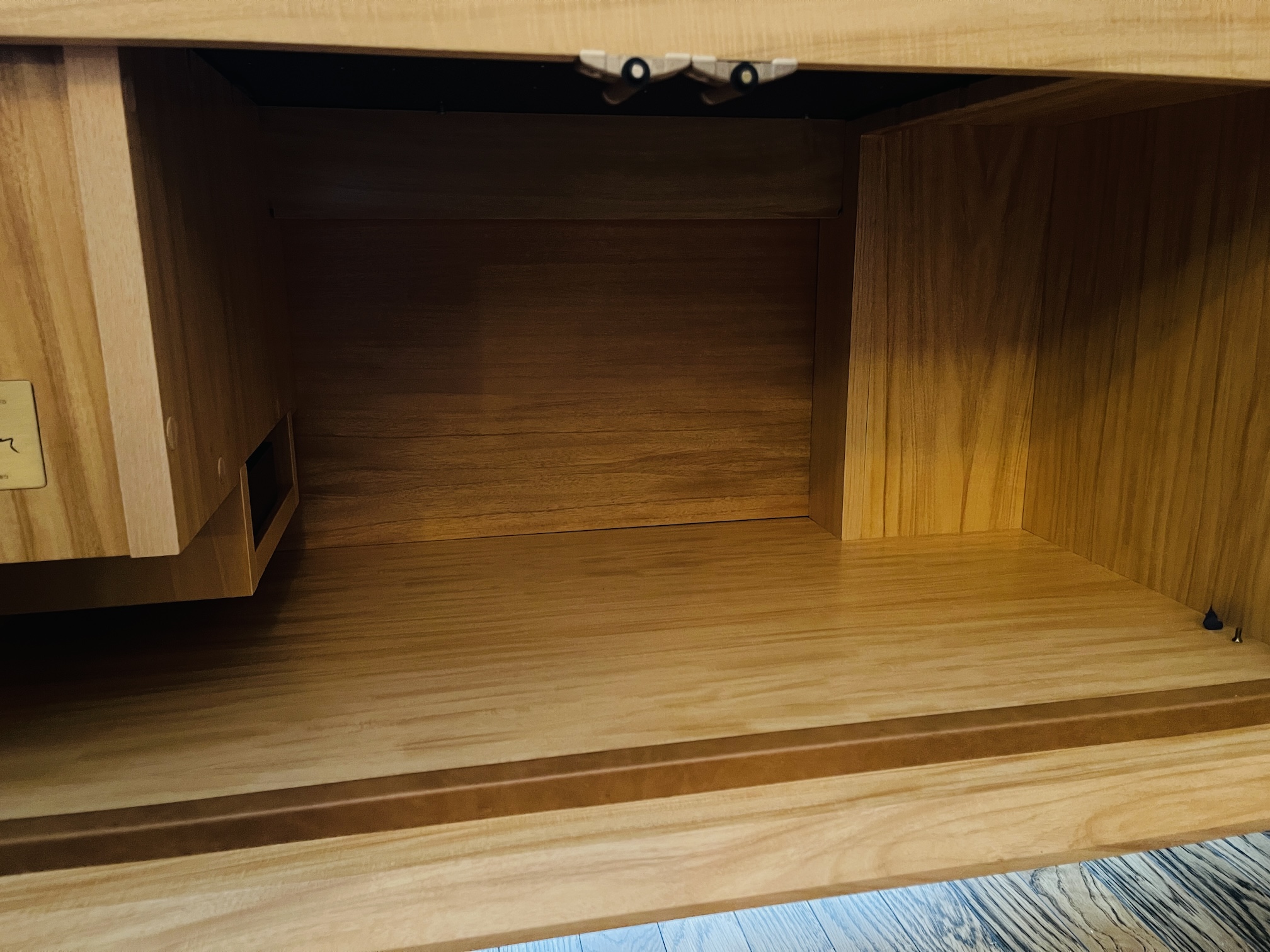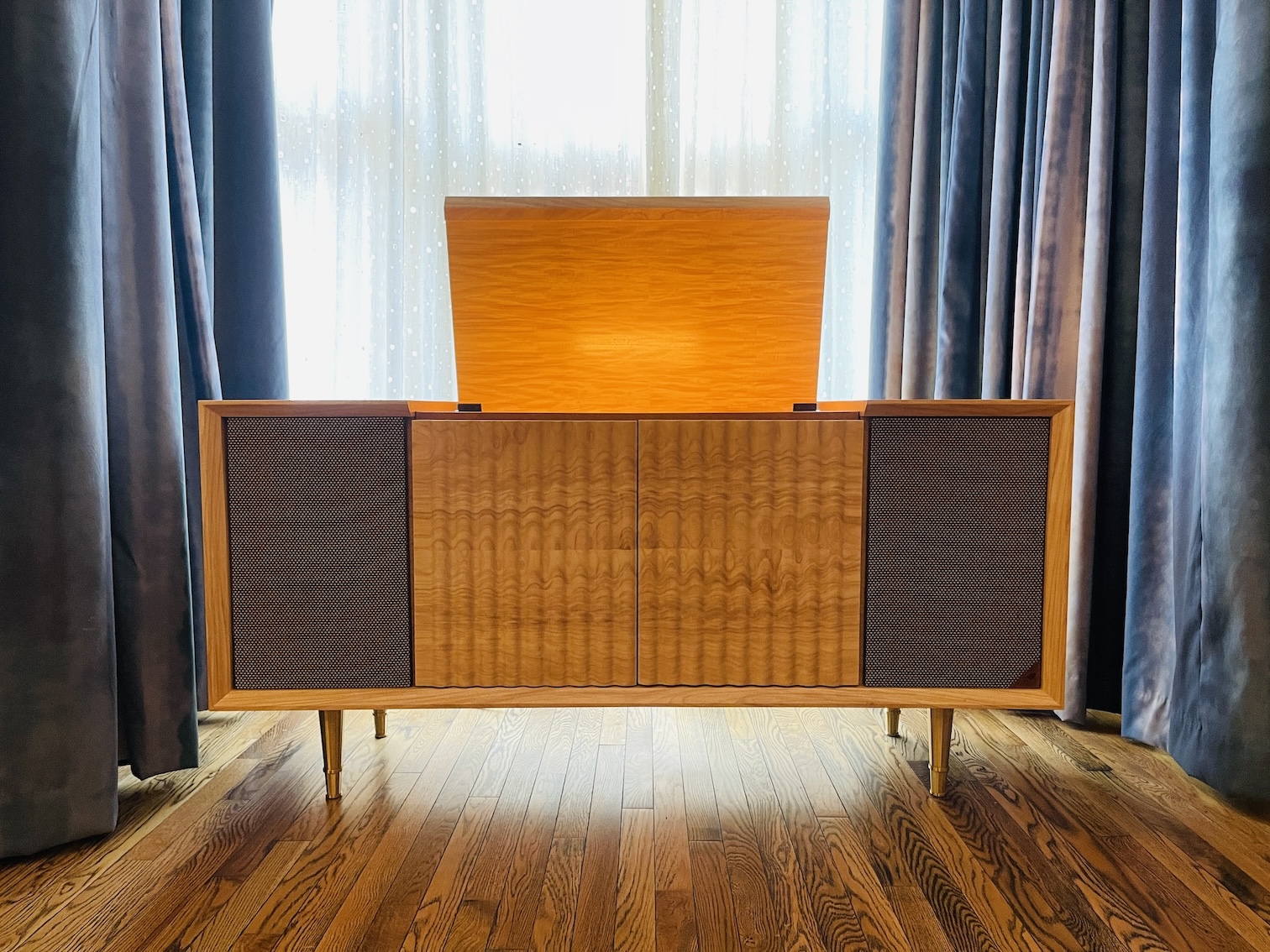Wrensilva's "The Standard" Balances Form With Function
An Up Close Sneak Peek of Wrensilva's Console Unit at An NYC Pop-Up at The Hotel Chelsea
Good design rests upon - and often wrestles with - the timeless ideals of form vs. function. It’s an age old debate that grapples between the way an item actually works against the way it looks. Architecture, automotive design, and - of course - the hifi industry all create products bragging fantastic looks, but do they always excel at doing the thing that they were designed to do?
Once upon a time, during a period between newsprint and television - and way way before the internet - the radio ruled the entertainment industry. It was a “hot” medium - as Marshall McLuhan would call it - entrancing a generation with news and entertainment that broke with unimaginable speed. Today, we may be glued to the screens of our phones, but the post-war world was huddled around a radio engaged in a theater of the mind.
A picture, as the saying goes, is worth a thousand words and soon radio’s medium cooled in the face of television’s rapid popularization. One of the inventions that truly found its place during the mid-century modern boom was that of the console stereo which infused more value and function in the face of television screens that grew a little bit bigger - and more colorful - with each passing year. Built by companies like Magnavox, RCA Victor, Grundig, and many others, these consoles were often made out of high quality wood and housed a turntable, an AM/FM stereo, a television, and sometimes a tape player (8-track, cassette, or reel-to-reel...your choice) as well. Perhaps - if it was a really nice console - it had a minibar.

Today, some refurbished consoles from that golden age might be offered near the four figure amount, but - more likely - they are offered for a low price, perhaps even for free. However - in my experience - the functionality of the unit will undoubtedly be all but useless: the turntable in all likelihood won’t work and good luck finding parts to repair it with - or, to find a person interested in repairing it. But - darn it - they look so cool! Especially if you’ve just moved into your first home or apartment. “Have a seat folks,” you’ll say to your dinner party guests, “let’s get you a martini and turn on the hifi.” Très chic!
Based in San Diego, Wrensilva is a hifi company specializing in the modernization of the console concept. But, the consoles they produce (currently, only two models) will make your grandma’s old Magnavox rotting away in her basement look like, well, an old Maganavox rotting away in grandma’s basement. This is an elevated, hi-end take on the console boasting exotic wood finishes, varied choices of metallic legs, gorgeously muted and moody recessed lighting and leather. Yes, some surfaces even feature leather touches.
As you might guess, a prospective buyer can’t just waltz into their local shop to see one in person. So, color me interested when I learned that the company would host a “pop-up” showroom this fall to showcase the units to prospective buyers who hope to physically interact with a model before opening their wallet to purchase one. Where would such a showroom be assembled? In a fashionably outfitted and decorated room at the Hotel Chelsea (or is it Chelsea Hotel?) in New York City, of course.

Wrensilva offers two models: The Standard and the flagship unit, the M1. Both models are also more than just a pretty face.
Both The Standard and the M1 feature a built-in, belt-driven floating split-plinth turntable which is custom manufactured for Wrensilva by VPI. The Standard has a 15/16” frosted acrylic platter while the M1’s frosted acrylic platter is 1 3/8”. Both models have identical listening modes consisting of 2 RCA inputs, a designated Sonos input, Bluetooth, and - of course - the phono feed from the turntable. The Standard comes with an Ortofon 2M Blue cart while the M1 comes with a 2M Black.
Both the Standard and the M1 offer 300 Class D watts per channel (with ICEpower module), 2-way bass reflex speakers and 1” high frequency textile dome drivers. The Standard’s low frequency drivers are 7 1/2” whereas the M1 sports 9 1/2” low frequency drivers, both made with an Egyptian papyrus cone. The speakers are crafted in-house.
The inclusion of Sonos is significant as one of the three founders of the company once worked for Sonos. Wrensilva is also a licensed technology partner with Sonos, in fact they were one of the original launch partners for the Works with Sonos program. I inquired about updates to the Sonos firmware and was told that all updates would happen over wi-fi. While I was exploring the unit, I found a small box inside of the cabinet. My assumption is that - in case of a significant update that might include hardware - the small black box could probably be switched out for a new one. The system can also be used as your home hub to broadcast to the other Sonos speakers in your home. So, you can listen to vinyl anywhere else you’ve got a Sonos speaker.
The large M1 unit certainly looked beautiful and was only further complemented by the slick boho interior design of the Chelsea Hotel. As I arrived on the first day of Wrensilva’s residency at the hotel, the flagship unit wasn’t quite ready for me to listen. So, instead, I spent some time – not as much time as I would’ve liked – spinning a few records I had brought along just for the occasion on the smaller unit, The Standard.
That’s the Form, What About the Function?
The Wrensilva gang was excited by the albums that I toted along (I came prepared) and we began with the basics. Given the mid-century flavor of the day, an original early mono UK pressing of Meet the Beatles was chosen as the evening’s appetizer. Immediately, the sound of Liverpool’s famous lads was delicious, juicy, resonant and large. Bass response was deep and noticeably more present on this recording than I’m typically used to hearing, but it balanced appropriately with the rest of the sonic spectrum. As I listened, I ambled about the room to discover the listening sweet spot and settled down crouched between two chairs.

Like something out of a Peter Sellers film, while we discussed the unit, the Wrensilva team and I slowly crouched closer and closer to the floor until pretty soon all four of us found ourselves sitting on the floor, exploring The Standard’s details while the Beatles blared away. I remarked to my suitemates - probably loudly - that this is exactly what the unit is intended for: being gathered around in a communal fashion while remarking about how good the music sounds and also how darned cool the thing looks. The wood was beautiful, of course, but so were the unexpected leather accents on the top and bottom of the unit interior.
Back to the sound, Lennon and McCartney’s voices, both soared high above the center of the unit with excellent imaging and the mono nature of the recording was perfect for the logistical placement of the cabinet’s speakers. The disc is a solid VG-, but I caught no distractible surface noise emanating from the Ortofon Blue (I'd argue that both units warrant the inclusion of an Ortofon 2M Black). When interfacing with The Standard, I noted that the switches, knobs, and hardware all had an enticing tactile feel.
The next record to take its place on the cooly lit turntable was Light in the Attic’s recent reissue of Pete Jolly’s Herb Alpert produced Seasons. A cool, but quirky album, some of the short tracks are a bit zany and I think my choice caught the attention of my sonic compadres although they didn’t let on that they were curious about what I was playing. However, the initial stretches of Jolly’s Fender Rhodes passages in “Leaves” and the propulsive bossa nova groove of “Younger Than Springtime” were both inviting and pleasant with a taut low end and pleasant midrange. I’m trying not to use the word warm, because I don’t want it to sound as though the unit is not precise, because there was a notably impressive dynamic range. However - and maybe it’s just the mahogany talking - there is an undeniable sweetness to The Standard.

There was undoubtedly a commanding authority to be heard from the Wrensilva. It sounded thick and imperative, the output running through the floorboards and into my Dr. Martens. Could all of that vibrating wood be responsible for that feeling? I don’t know, but it did lend an element of excitement to the listening experience.
Is this the unit you would purchase for an extremely neutral studio level mixing session? No, but it is not intended to be. Instead, imagine a warm and fuzzy, rainy late afternoon in October with a Burt Bacharach production coming out of The Standard. You put on some tea, I’ll go outside and gather a bundle of firewood.
I brought a freshly pressed copy of Harry Beckett’s 2008 album, The Modern Sound of Harry Beckett which was just released for the first time on vinyl on the On-U Sound label. The first track on side 2 immediately grabbed the attention of the room. Again, there was that warmth coupled with excellent imaging that lusciously supported the smooth jazz hybrid vibe of the production. Not only did I enjoy getting to know an album I’d only recently discovered, but I was being further drawn into The Standard’s personality and charm. Here, however, it occurred to me that the unit – as is the nature of a console unit – is bound by its speaker placement. Were I listening to this album at home, I might have spread the speakers out, fine-tuned their direction depending on the sound in my room. However, the Wrensilva unit - by nature of design - restricts users from tinkering with speaker placement. But, a console unit is what a console unit is, gang.
The fit and finish of The Standard is undoubtedly top-notch. In fact, the units feature a hand signed plaque from the craftsman who assembled it in their California workshop. Frankly, I was a bit overwhelmed by the beauty of both units; to fully appreciate them as objects, it would be ideal to see them at different times of day, in different light. I’m sure that there are no shortage of elements to appreciate when living with this design for an extended period of time.
 The well-constructed interior of the unit.
The well-constructed interior of the unit.
So, okay. Sit down. A word about price. The Standard starts at $12,800 dollars and increases depending upon your customization choices. The M1 starts at $16,800 and also goes up from there. Your mother always said you had good taste, didn’t she? Well, no one is going to argue that the Wrensilva units aren’t expensive, but it might be countered that the target market won’t bat a lash. It likely won’t be the most expensive item in their living room, or den.
Look: the Maxell guy being blown away by his JBL L100s is sitting in a Le Corbusier LC2 Petit Modele Armchair. Currently, this lounge chair is priced around $6500 per. So, if that’s your aesthetic, and that’s your budget, then a Wrensilva fits within the scheme of things (some phono cartridges cost $12,000+_ed).
If your spending is somewhat more discretionary, then the Wrensilva serves an inspirational - and maybe aspirational - purpose. That’s because aside from the way it sounded, there’s something else The Standard offered: fun! I enjoyed my time listening, had a blast sharing some vastly different albums with folks who’d never heard them before (though I didn’t have time to play the Misfits record I cheekily brought along) and I was charmed by the physical craftsmanship of both pieces. Crawling around the floor of the Chelsea Hotel on hands and knees to explore a five figure hifi unit is what hifi dreams are made of, folks. It’s fun just to browse, too. And - yes - The Standard sounds as good as it looks, and you’ve seen the pictures, the thing looks great.
Who knows? Maybe the Wrensilva will entice a young music lover to pull grandma’s old Magnavox console out of the basement. Drag it into the light of day. Give is a careful cleaning, repair and restain the old wood; bring it back to life. Maybe they’ll rip out its old guts and figure out how to put a great modern turntable in there and pair it with some decent speakers and man, doesn’t that thing look good? “Where did you find that?” they’ll ask at the dinner party.
“Well, it’ll do for now, but I really want a Wrensilva.”










































.png)








